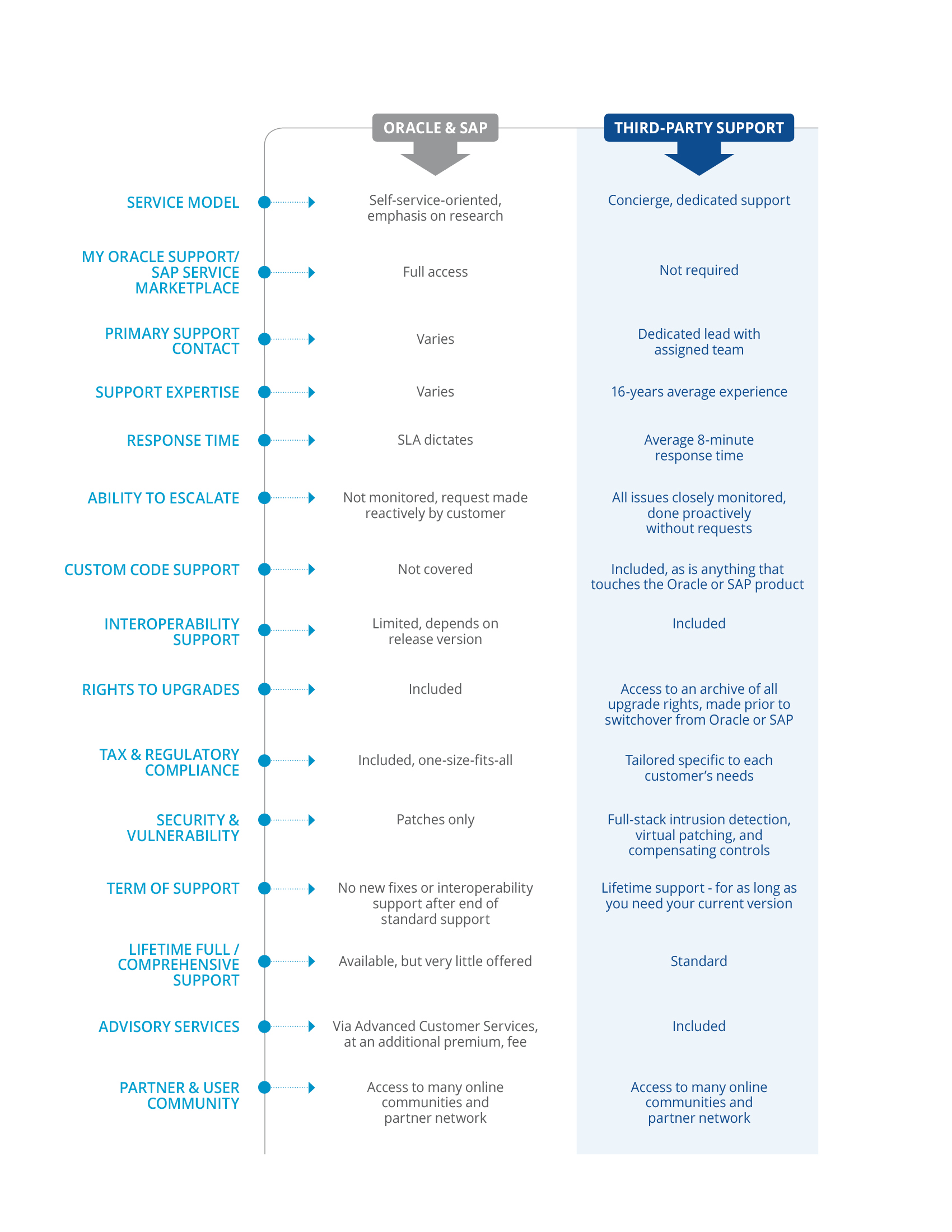A Comparison of Traditional Oracle and SAP Support
and Modern Third-Party Support
Automation and self-service can be of real benefit in our everyday lives. Calculating prices, requesting billing information, or ordering concert tickets are perfect applications because they have well-defined objectives with a limited selection of choices. Software support, on the other hand, with all its complexities and frustrations, will never be well suited to automation and self-service.
And yet that’s exactly the model that Oracle and SAP are delivering to their customers for a premium, annual price. Over the past decade, as connection speeds and search technologies have improved, software publishers have trimmed their support costs by replacing live services with online tools and portals.
As a result, customer dissatisfaction with the traditional support model is mounting. IT employees are spending more hours in search of fixes for identified issues and fewer hours on strategic initiatives. Knowledgebases provide only information, not experienced guidance for stubborn support issues that can involve customizations, interoperability, and security vulnerability protection.
Fortunately, support alternatives are also on the rise. Whether you are looking to reduce your IT support spend, want a markedly improved quality of service, or need to free your budget up for technology aimed at driving growth and innovation, the third-party software support model can help. Third-party support is comprehensive, highly-responsive, and personalized service – at a fair price.
A Direct Comparison of the Quality of the Support Models
If you are only accustomed to the software publisher model, appreciating the differences between it and third-party support can require a shift in perspective and expectations. To aid your understanding, the table below contrasts the fundamentals of Oracle and SAP Support with those of Spinnaker Support.

Many of the differences described above can be summarized as a fundamental contrast in philosophies. The business objectives of third-party support providers are completely different from those of Oracle or SAP. Publisher support is primarily “software driven.” It’s a standardized approach that solves a limited set of issues and tends towards promoting more software and upgrades as a solution.
In contrast, third-party support is “support driven.” This is evidenced by the emphasis on more proactive and more comprehensive responses that focus on solving issues more quickly, no matter what the source or who are required to weigh-in on the solution. Spinnaker Support is intensely focused on the quality and value of customer service, reinvesting its profits into these customer-facing areas.
How to Calculate the Cost-Benefit of Third-Party Support
The above table explains why users of third-party support report a high level of satisfaction with the quality of the support (96.3% satisfaction rating from Spinnaker Support’s customers in 2023). An additional benefit to consider is the financial savings of the third-party model over standard SAP and Oracle maintenance fees.
Oracle or SAP annual support, which represents 17-22% of the cost of the original licenses and increases by 2-4% annually, can be a drag on your IT budget, especially for legacy systems that only require occasional support assistance. Third-party support starts at 50% of that cost and can include discounts for shelfware and multi-year contracts. Spinnaker Support also offers commercial term flexibility that allows customers to scale support over time.
To get a sense of what these savings look like, we recommend the Spinnaker Support Savings Calculator. With this online tool, you can compute your potential hard cost savings over traditional publisher support. In less than a minute, and with only six inputs, you can review your estimated savings under Spinnaker Support.